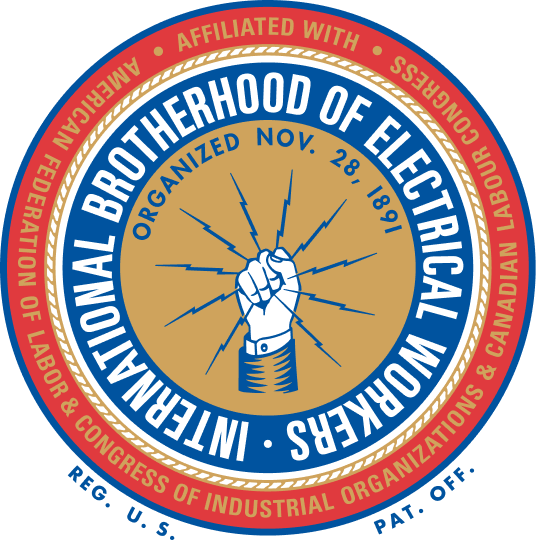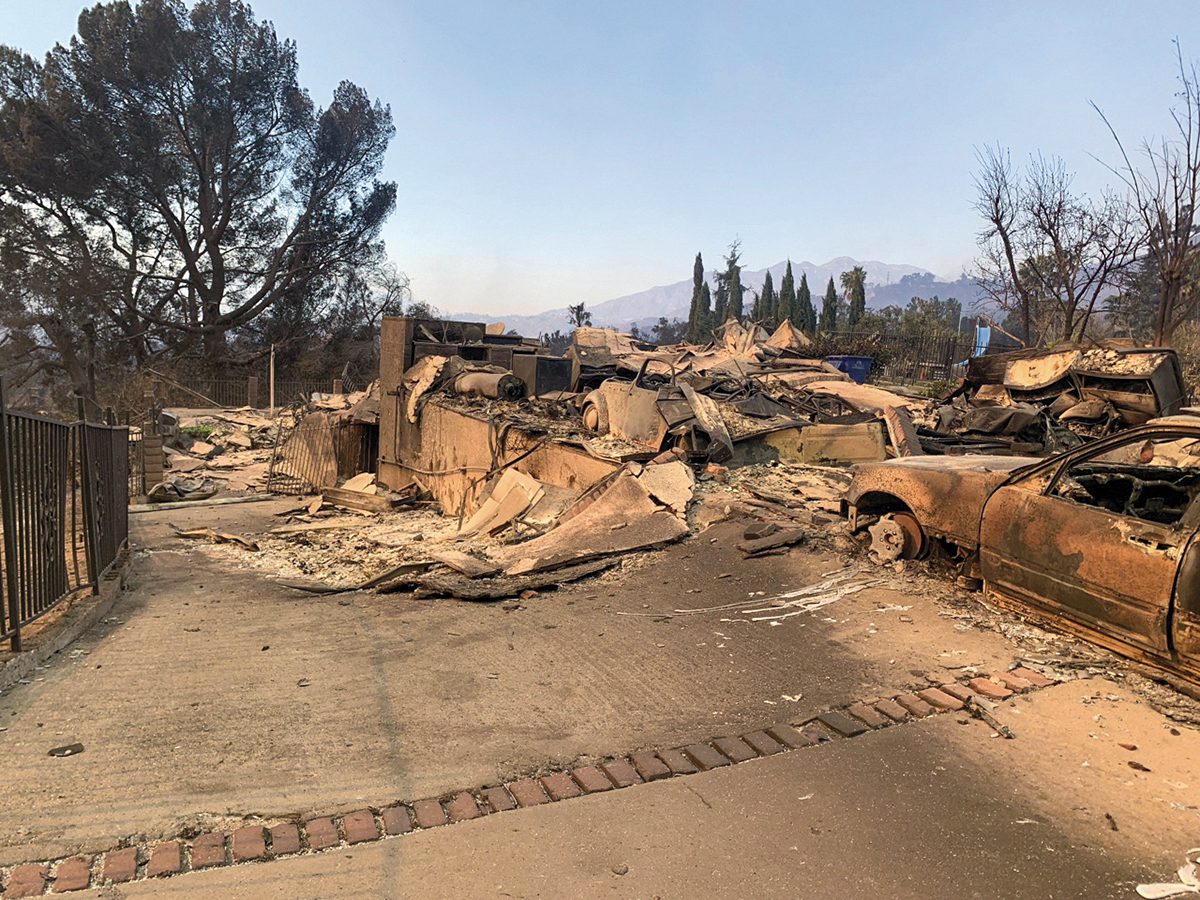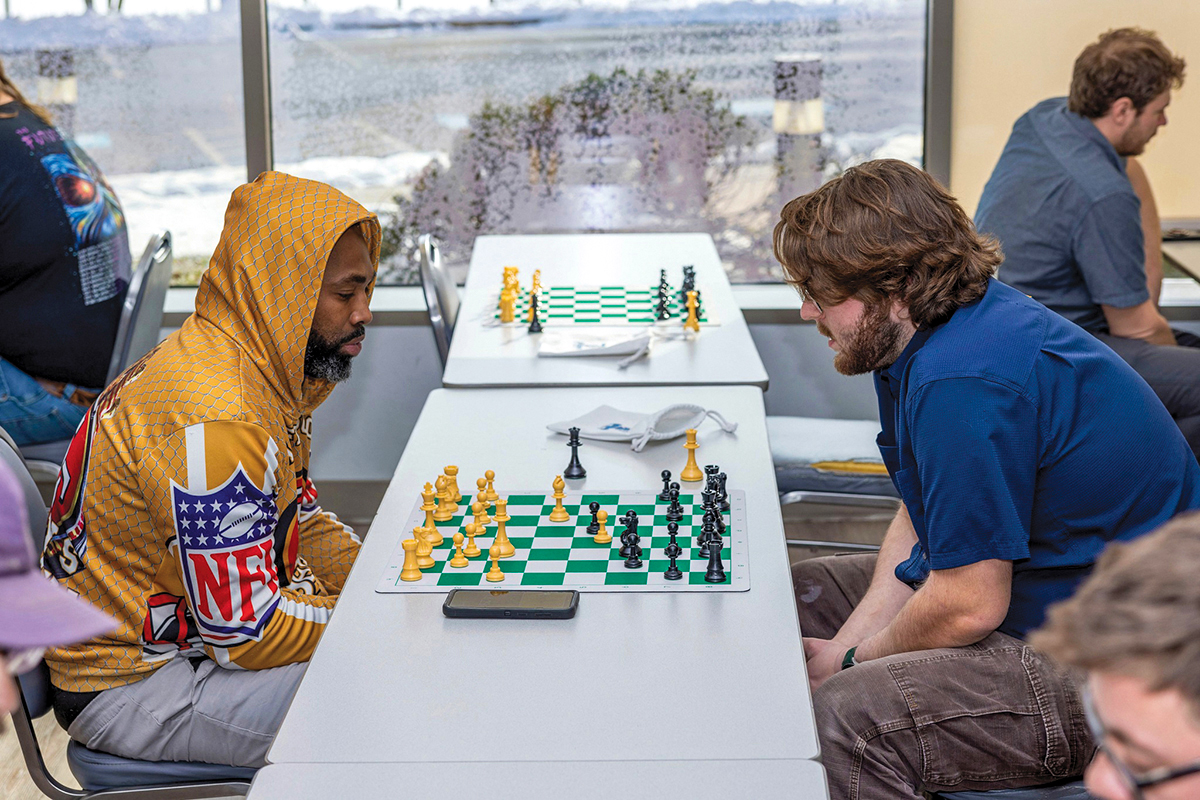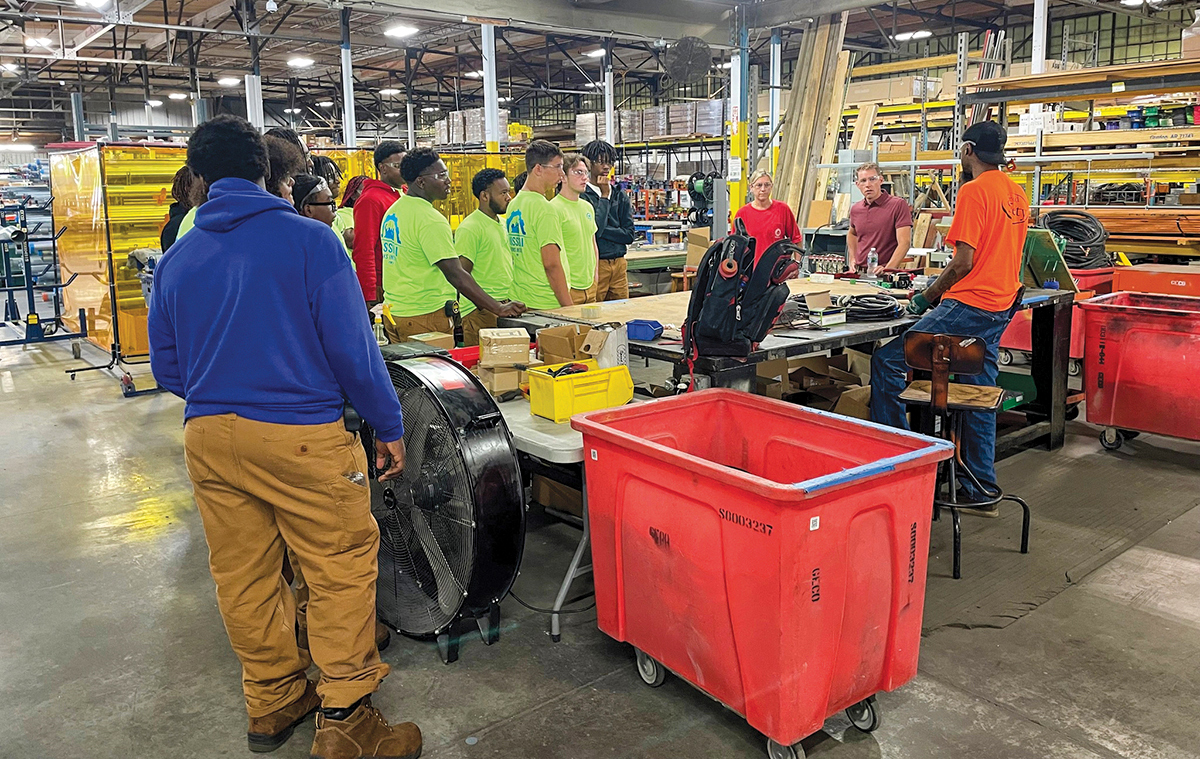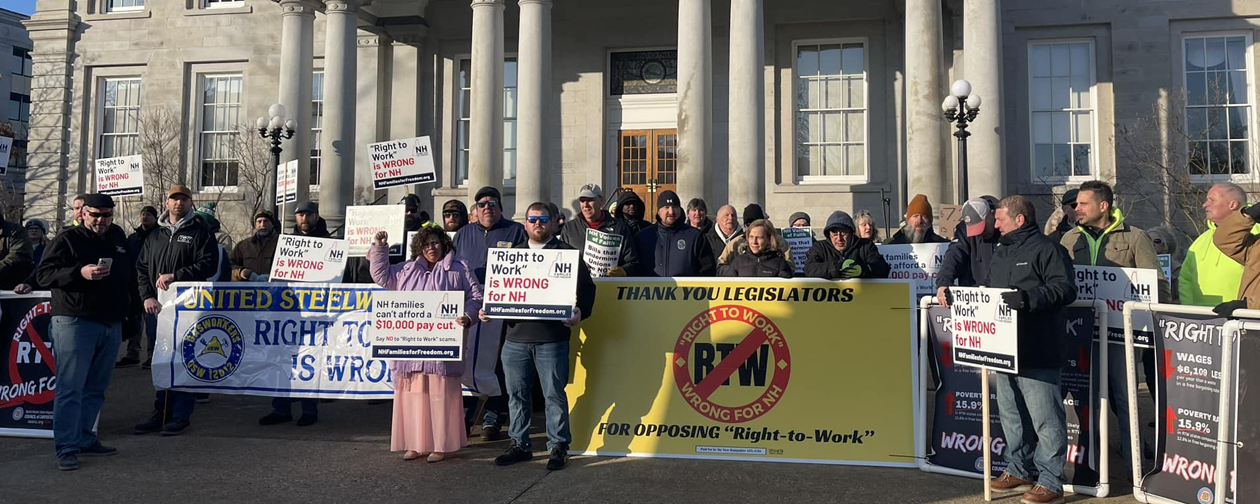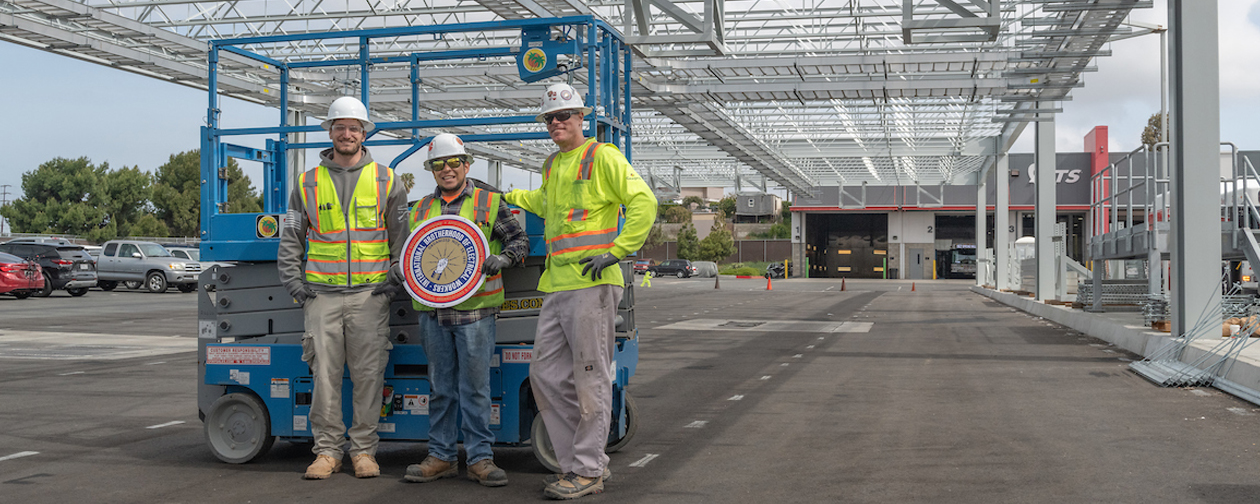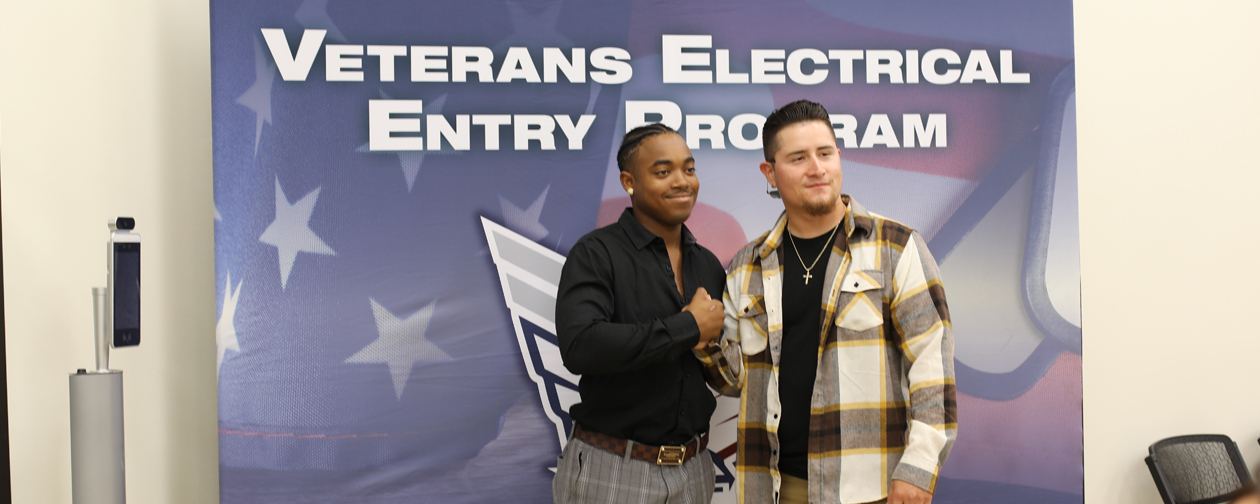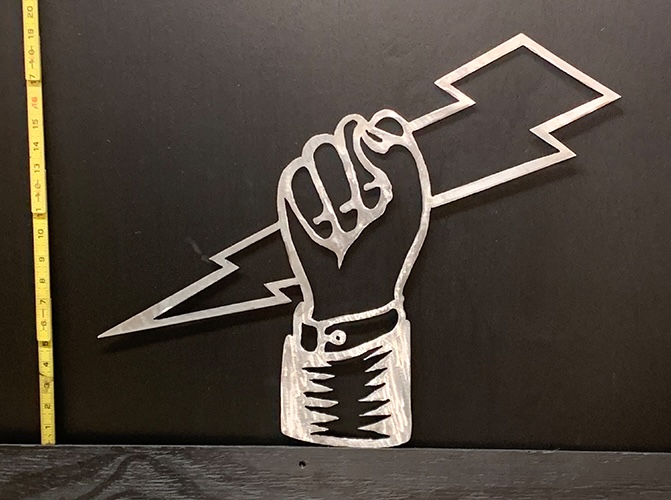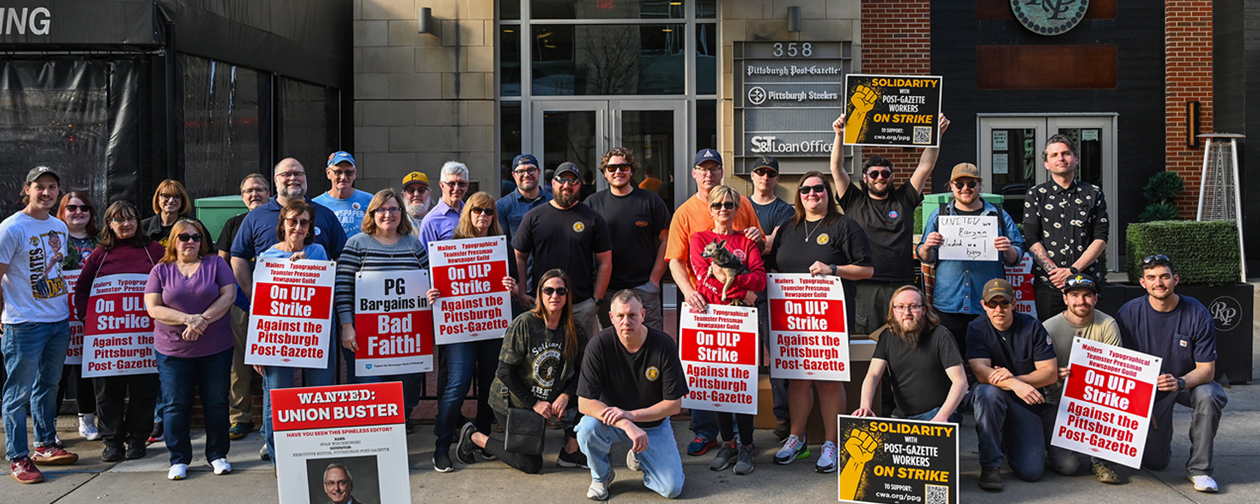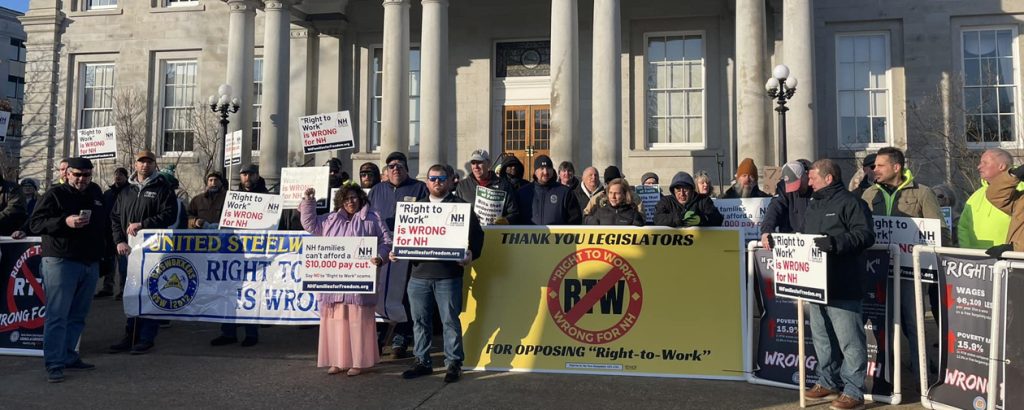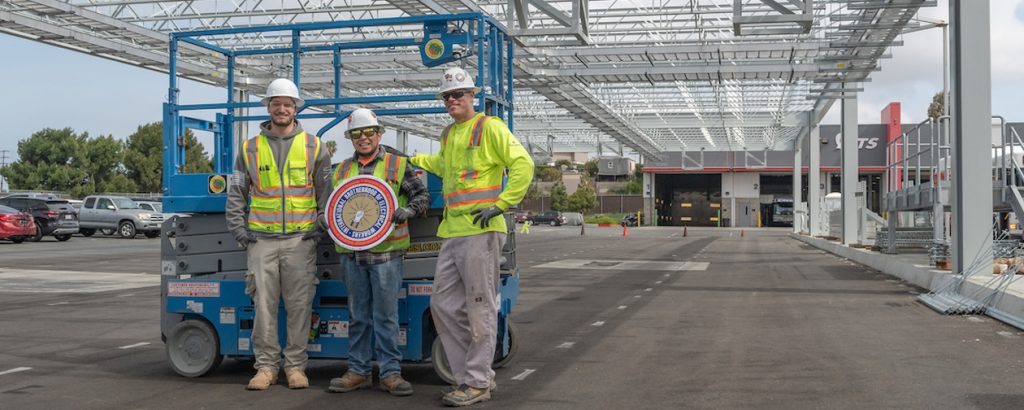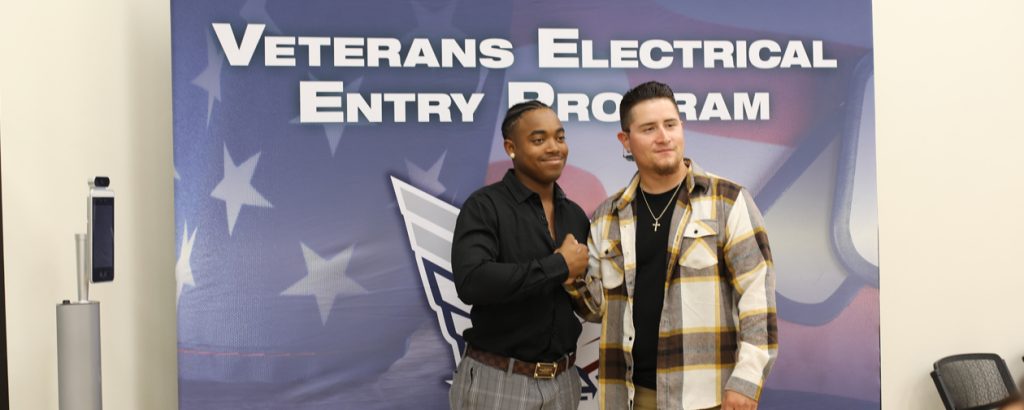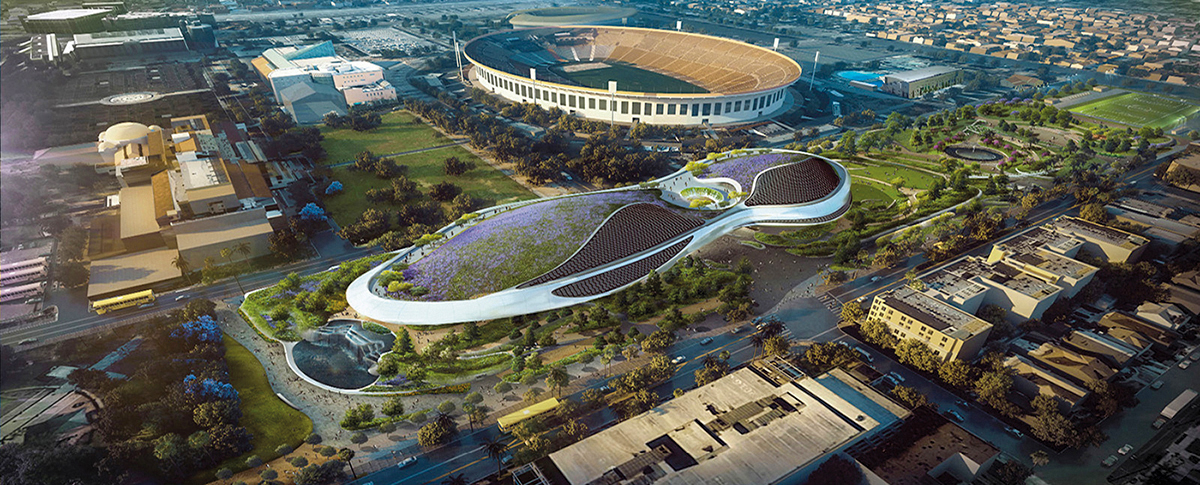
When you win the contract to build a museum dedicated to storytelling art, you shouldn’t be surprised when construction isn’t straightforward.
The IBEW-built Lucas Museum of Narrative Art in Los Angeles is an extraordinary edifice. It looks like someone converted the skull of a space whale into the headquarters of an intergalactic police force from George Lucas’ “Star Wars” universe.
The billion-dollar endeavor employed more than 4,000 union workers, including more than a hundred members of Los Angeles Local 11.
“This is a custom building. Most projects, you get a print, you get standard material, and then maybe one part that was unique. Maybe two. A special detail. This entire project is a special detail,” said Local 11 Business Manager Robert Corona.
It wasn’t even supposed to happen here.
When Oscar-winning director and producer Lucas and his wife, Mellody, announced plans in 2012 for a museum dedicated to paintings, sculptures, murals, photography, comic art, book and magazine illustrations — any and all art committed to telling a story — the home they had in mind was an abandoned airfield in San Francisco.
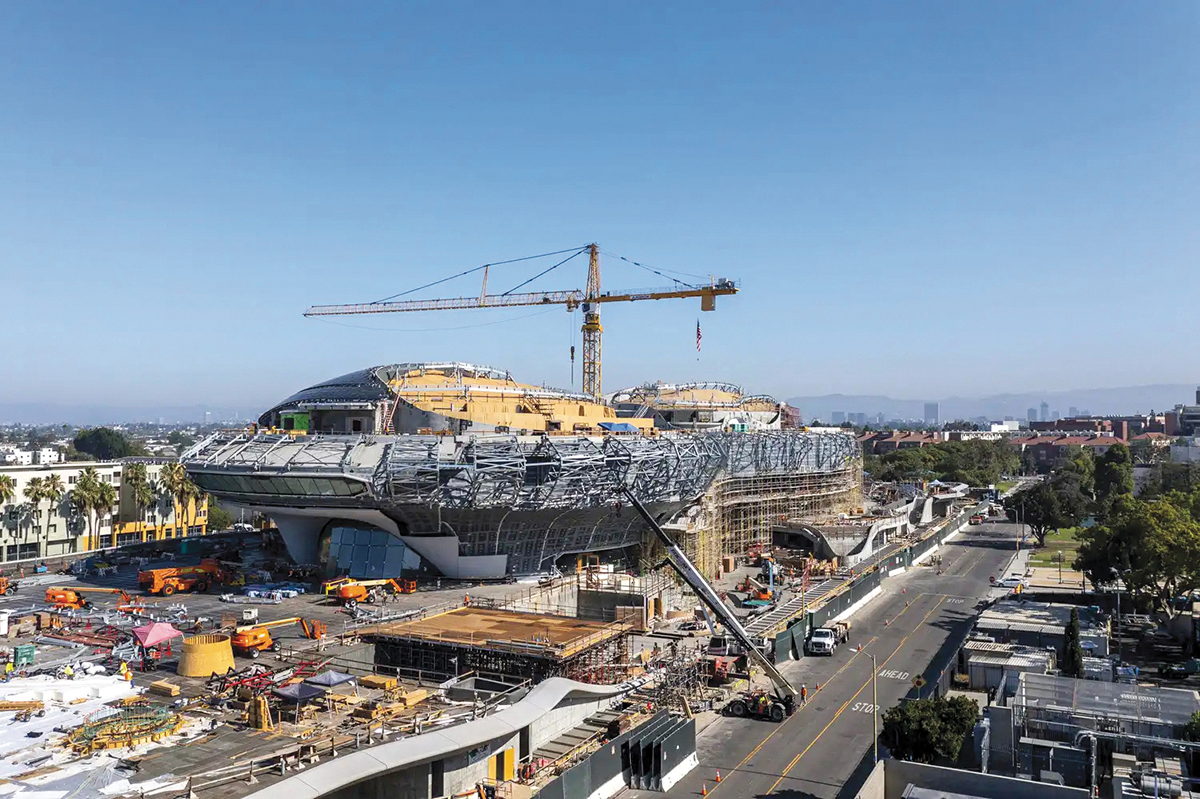
By 2014, though, the project took flight and landed in a parking lot outside Soldier Field in Chicago. Reception to the design was, at best, mixed. Critics said the design — a cross between a circus tent and Jabba the Hutt’s palace covered with thousands of milky white fiberglass-reinforced polymer panels — was an eyesore. Lawyers, judges and politicians spent years squabbling, and the parking lot stayed a parking lot.
By 2017, the Lucas museum was nothing but dreams. And where do dreams go to come to life? Hollywood. Or in this case, a few miles south.
The museum had a birthplace, the 160-acre superblock in south L.A. called Exposition Park, already home to the Coliseum; the Natural History Museum; and BMO Stadium, the venue for Major League Soccer’s Los Angeles FC.
Ground broke in March 2018, and Local 11 members set to work with thousands of other construction workers targeting an opening in 2021.
Inside would be 100,000 works from Lucas’ billion-dollar narrative art collection, from initial drawings and props from the “Star Wars” and “Indiana Jones” sagas to 2,000-year-old mosaics pulled from Roman ruins.
Not every interesting building requires interesting work, said Local 11 Business Representative Errol Cutley. Conduit is conduit and a light switch is a light switch in a lot of fancy buildings. Not here.
“There is not a straight angle in that place, and everything, I mean every component, is unique,” he said.
The project labor agreement covers nearly every trade, and almost a half-dozen signatory contractors have been on site over the years, Cutley said. Journeymen and apprentices have been called on for medium-voltage, low-voltage, fire alarm, radio wire and communication installations.
Cutley said he heard from the Local 11 members on the project that, yes, the unique design of the building created some of the challenges on the project, but integrating all the custom components into control systems was the true challenge.
“Every light in every room is specific in size and shape, from strings of LEDs to spotlights that can move, change brightness and warmth. All of it is integrated into a wireless control system,” he said.
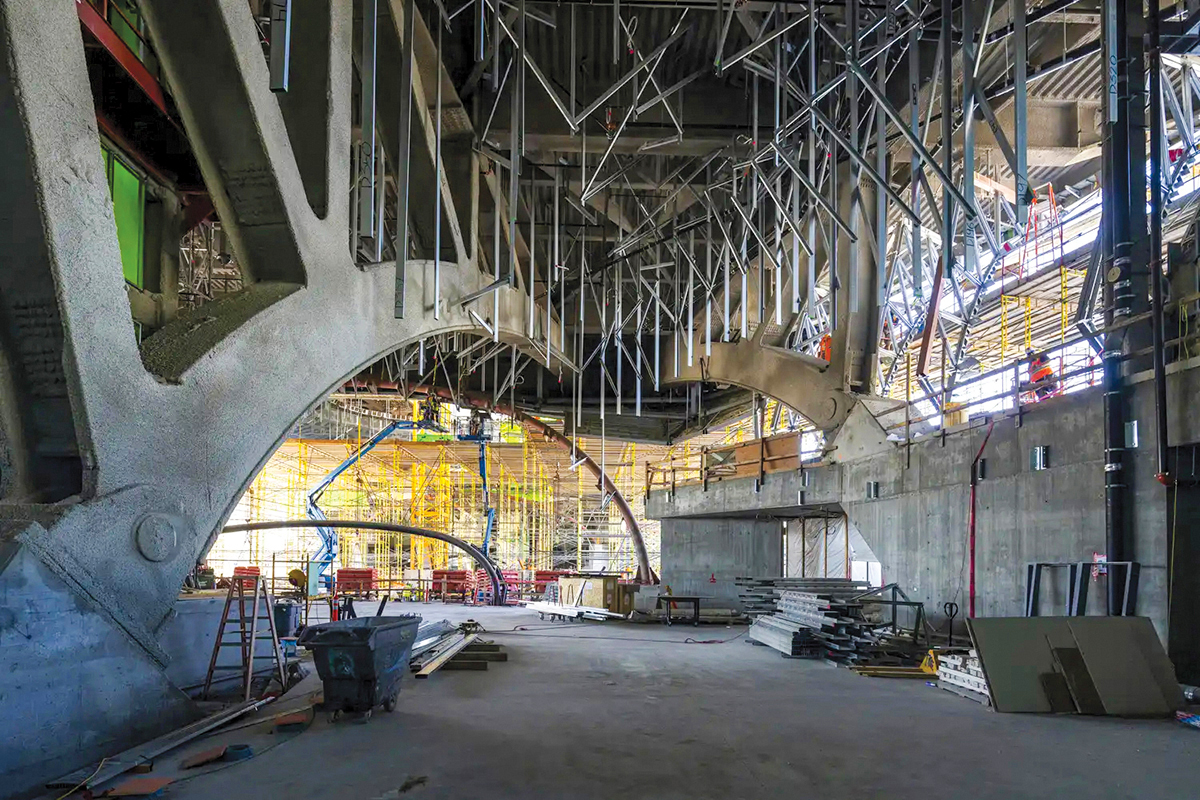
The building was also designed to make renovation easier, Cutley said. Instead of running conduit through a concrete slab, for example, a large part of the foundation was replaced with Styrofoam sheeted over with concrete.
“The conduit is embedded in the Styrofoam, which in some areas is six feet thick. In future remodels, you just simply peel back the concrete top, and you have much easier access to conduit,” he said.
But even though the museum building’s odyssey was over, there was still a struggle or two before the happily ever after. Few battles are bigger than what the construction faced in 2020.
“Everything slowed down,” Corona said. “Some of the delay was that everything was delayed, but some of it was rethinking and redesigning.”
In 2021, the opening was planned for 2023, and in the next year extended to 2025. In January, even though construction was nearly complete, the opening was bumped a little further, to early 2026.
Not all the complexity of the build was the result of its style. There are multiple sources of power, including solar and the grid, but also an on-site battery storage facility that sometimes takes power from the building and sometimes provides it. This isn’t necessarily new, but Corona said it highlights where the IBEW shines.
“If we become glorified installers, taking something out of a box and hanging it on a wall, we become as replaceable as what we are installing,” Corona said. “Our value is our skill in integrating lighting, power, fire and communications systems, however complex the plan.”
Delivering that work from a trained, diverse, local workforce, Corona said, is why this project was always going to be wall-to-wall union.
“The nonunion side is not competitive on private projects in Los Angeles at this scale and this complexity, and they haven’t been for decades,” he said. “Will we always get them? I hope so, and our investment in organizing and training is what we do instead of relying on hope.”
Corona said it is important to remember that even though most buildings of this kind wear the name of the people who paid for them, you shouldn’t be fooled into forgetting the people who made them real.
“The first job I worked on as an apprentice was the Convention Center expansion. Huge project. I was there 18 months. And what’s cool about that is, when I go there for a car show or a meeting or dinner, there’s lights I can point to and say: ‘I put that in. My sweat and actual blood took this off a piece paper and made it real,’” Corona said. “I know my kids roll their eyes, ‘Yeah, I know, Dad.’ And everyone else takes it for granted. But we know. The professional who made it knows what it takes. And these structures will last because of us.”
